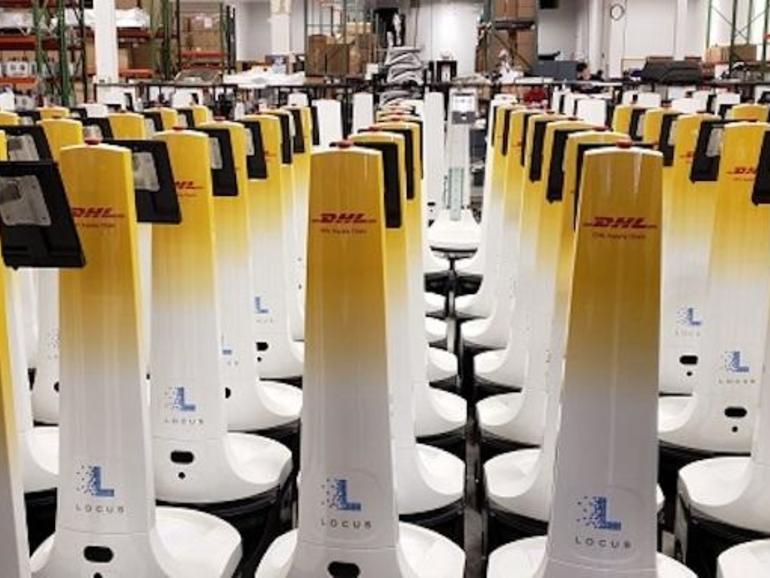The robotics sector continues to see positive growth due to the rising demands of e-commerce during the pandemic. The latest anecdotal proof? DHL Supply Chain, a contract logistics provider, is planning to take on up to 2,000 new warehouse robots by 2022.
The robots will be provided by Locus Robotics, with whom DHL Supply Chain has been piloting an ongoing collaboration. The autonomous picking robots rely on machine vision to strategically identify items to be picked and placed on a line. The robots calculate an optimal trajectory and grasping strategy and learn over time. These sorts of robots are becoming more and more common in hybrid human-robot logistics warehouses, which are the engine of e-commerce’s increasingly fast delivery promises.
“It is particularly important for us to be able to consistently optimize our supply chains — assisted picking robots are very effective in this respect,” says Markus Voss, Global CIO & COO DHL Supply Chain. “So far, more than 500 assisted picking robots are already in industrial use in our warehouses in the USA, Europe, and the UK. By the end of 2021, another 500 robots are to be added in a total of more than 20 locations. The collaborative picking technology has clearly proven its effectiveness and reliability in modern warehousing. More locations have already been identified with concrete implementation roadmaps for the remaining robots, which we will deploy in 2022. However, the overall potential for assisted picking robots in our DHL warehouses is much bigger, so we are confident that we will meet the targets we have set ourselves together with Locus Robotics.”
Earlier this year Locus announced $150 million in Series E funding, bringing its overall valuation to $1 billion. Locus is using the funding to accelerate product innovation and global expansion as warehouses continue to face ongoing labor shortages, exploding e-comm volumes, and ever-greater demand for speed and reliability in their technology deployments. A Locus spokesman told me the company expects that over a million warehouse robots will be installed over the next four years, while the number of warehouses using them will grow ten‐fold.
The current generation of picking robots can be swiftly integrated into existing warehouses, drastically reducing the time it has traditionally taken to onboard industrial robots in arenas like manufacturing.
“Our expanded partnership with DHL reflects the increasing demand for warehouse digitalization worldwide to meet today’s exploding fulfillment challenges,” said Rick Faulk, CEO, Locus Robotics. “Locus is proud to be a valued technology resource that is helping DHL realize their strategic vision of digital transformation.”
For DHL’s part, the move is likely a matter of adaptation as a matter of survival. The pandemic has only accelerated e-commerce’s swift rise and growing customer demands. In addition to robots, DHL Supply Chain has incorporated software and cockpit solutions to give the company real-time information on the status of the global service logistics network of their customers. In a familiar cycle, demand is driving need for ever-greater efficiency, and we’re currently witnessing an arms race for who can adopt the correct technology cocktail fastest.



